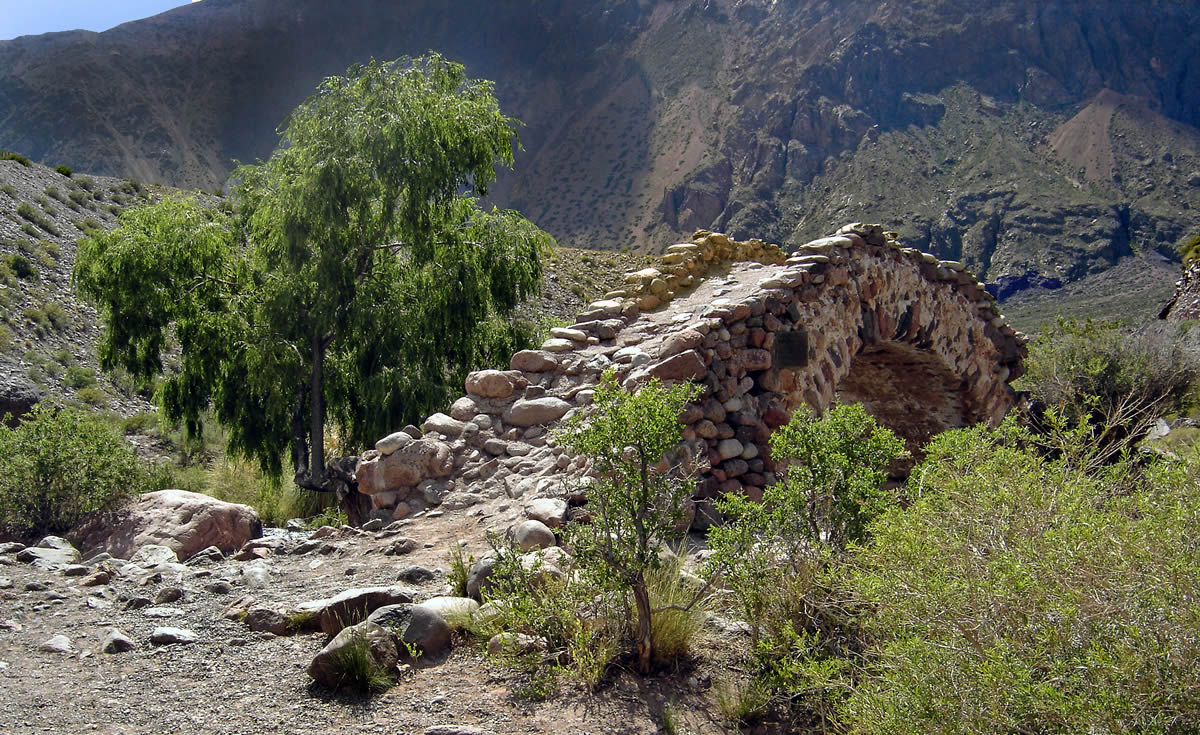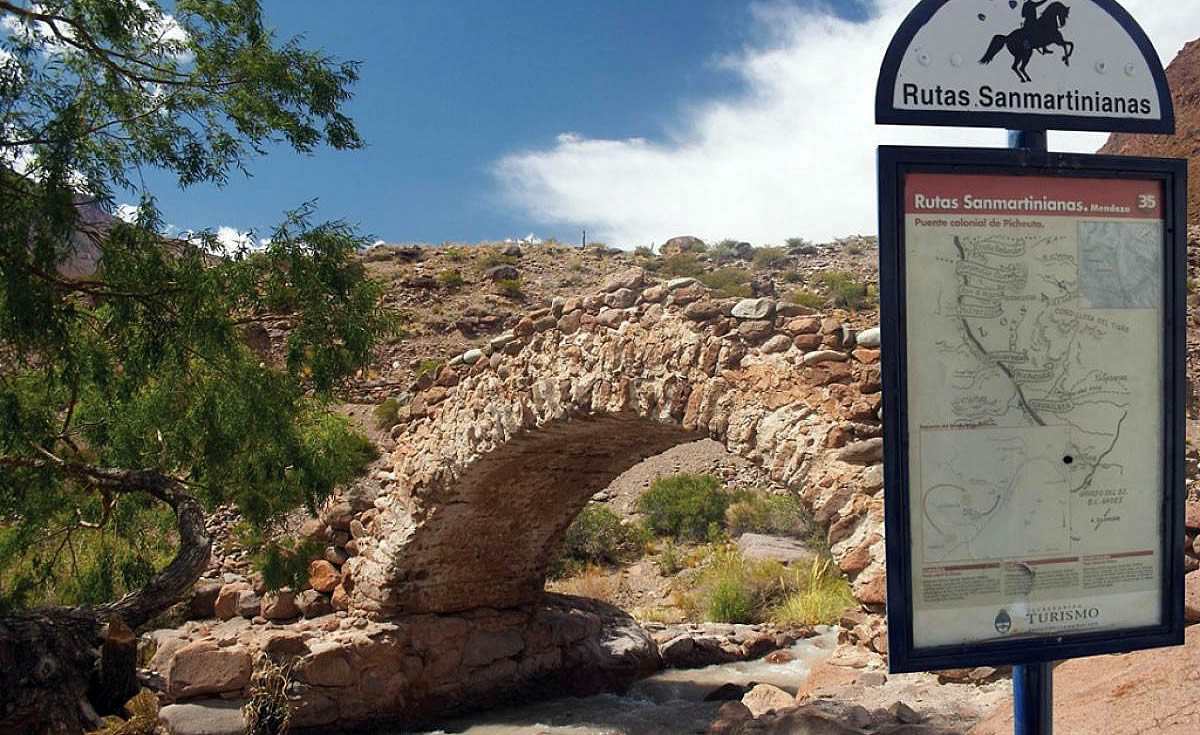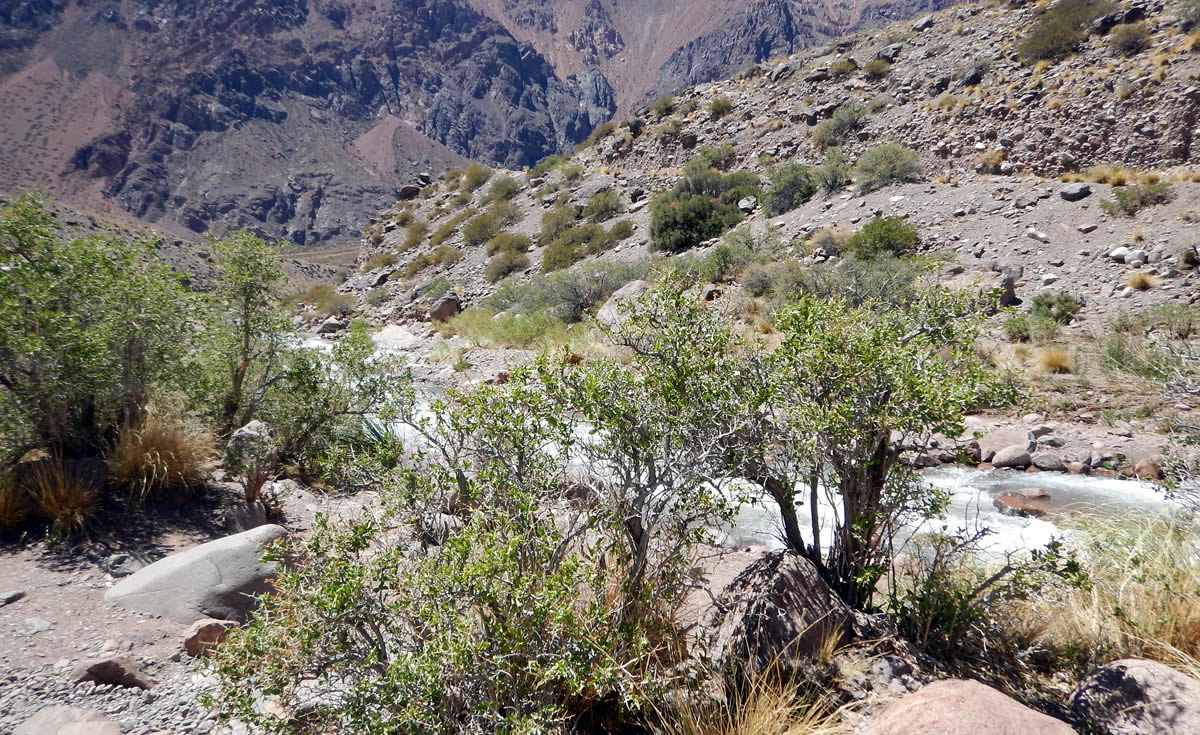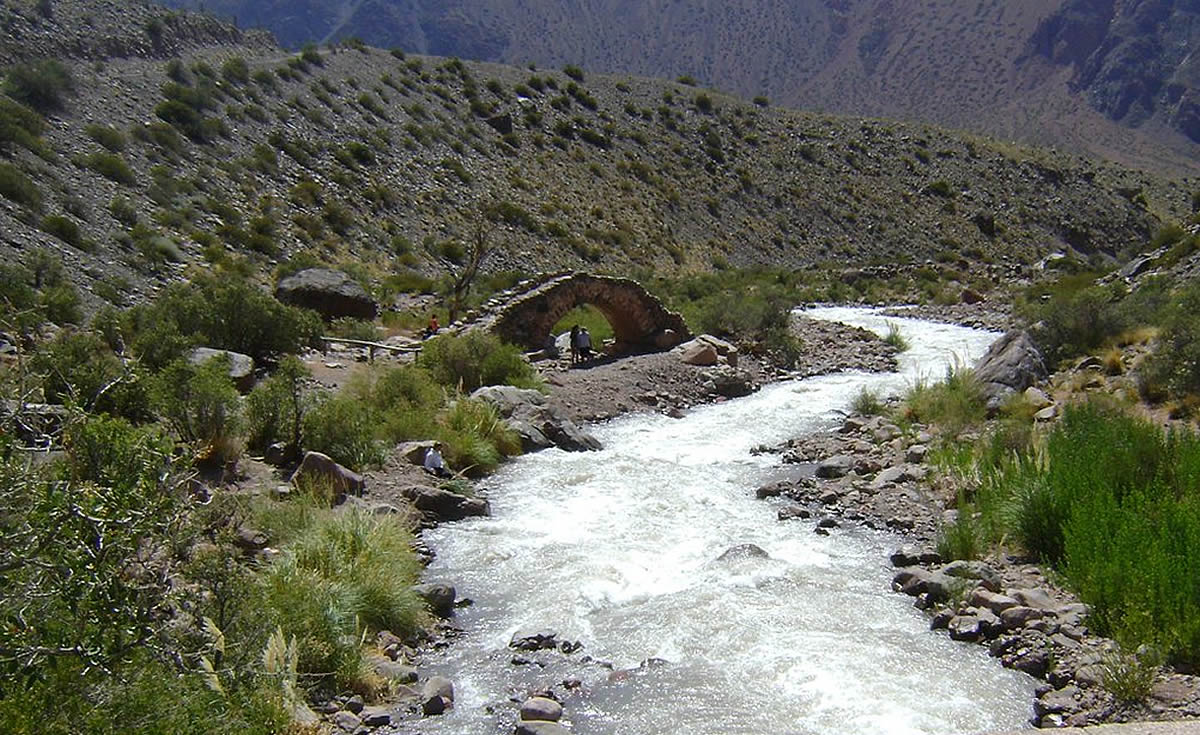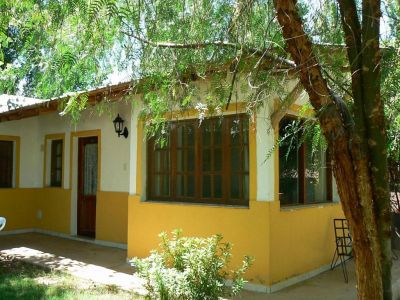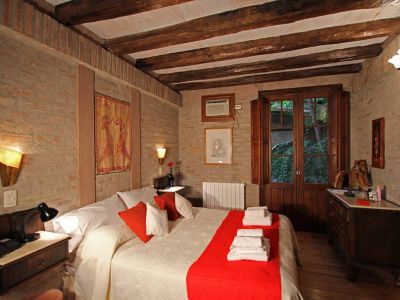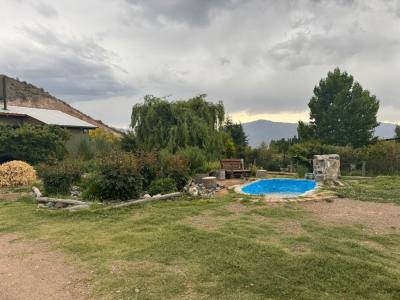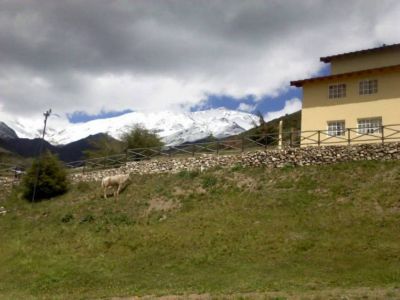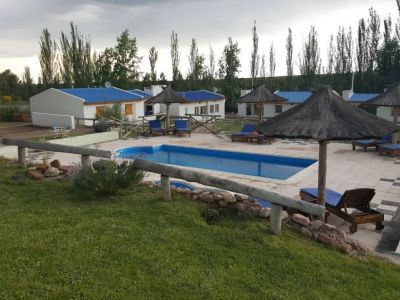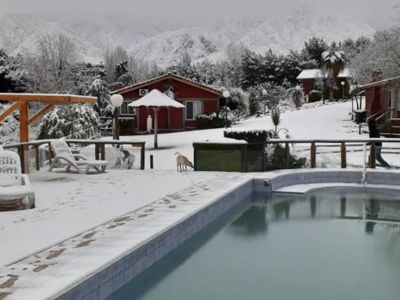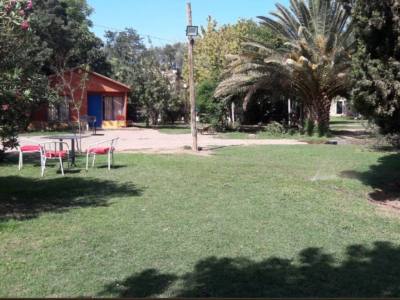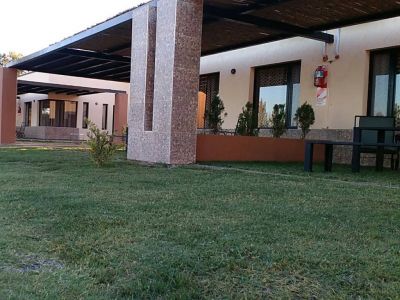Walking through these ravines makes me imagine the gestation of the men who crossed the untamed paths of the mountain range to carry out the freedom of Chile. Colonel Las Heras, in charge of the column that advanced through the Uspallata Pass, crossed that path of stones joined with colonial-style mortar.
Picheuta Bridge
Very close to the bridge, on the north bank of the stream, remains of the Fortín de Picheuta that in 1814 San Martín, being governor of Cuyo, ordered to be erected to give refuge to the soldiers who passed through that region. The story tells us that in January 1817 a realistic advance attacked the fort where a few patriotic soldiers were stationed. The news that the royalists were already on this side of the mountain range reached the camp of Colonel Las Heras, who sent a division that defeated the enemies in the combat of Potrerillos. This would have been the baptism of the Liberating Army at the Crossroads of the Andes. The historical importance of the Picheuta Bridge in the Sanmartinian gesta and in the historical-cultural values of the province of Mendoza earned it to be named National Historic Monument. Undoubtedly, it was an important step by its strategic location and a witness to history that holds many stories of travelers.
Miriam Coronel
Welcomeargentina
